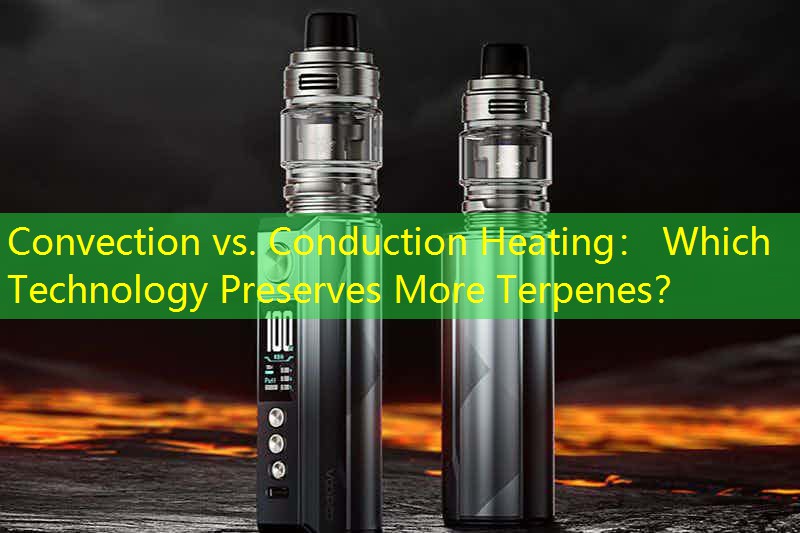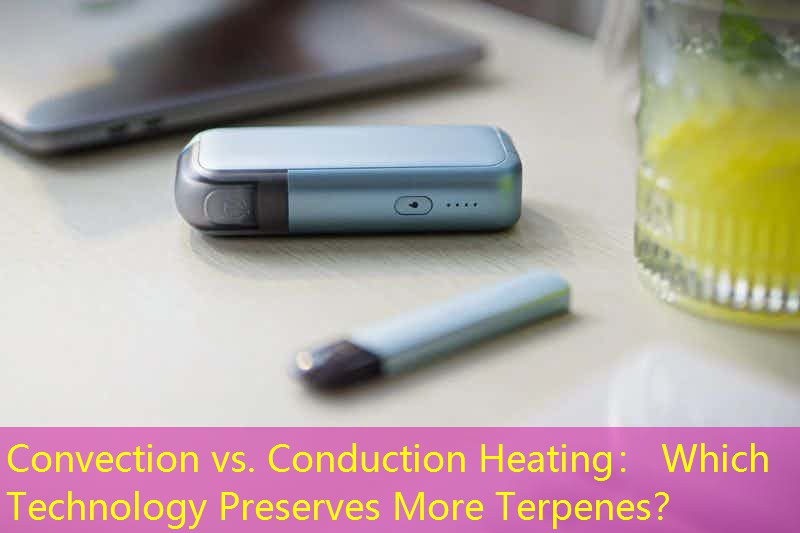Sarrera
Belar lurruntzearen mundua izugarri eboluzionatu da berokuntza-teknologia ezberdinen agerpenarekin. Hauen artean, konbekzio eta kondukzio berokuntzak arreta handia lortu du, bereziki, terpeno izenez ezagutzen diren zapore-konposatu delikatuak kontserbatzeko duten gaitasunari buruz. Artikulu honek konbekzioari buruzko ikuspegi sakona emango du. kondukzio-berokuntza teknologiak, haien ezaugarriak ebaluatuz, erabiltzaileen esperientziak, konparazio lehiakorrak, alde eta kontra, eta xede demografiak.
Berokuntza Teknologiak azalduta
Konbekziozko Berokuntza
Konbekzio-berokuntzak aire beroa erabiltzen du belar-materiala zeharka berotzeko, tenperatura kontrola uniforme eta zehatza ahalbidetuz. Metodo honek konposatu aktiboak direla ziurtatzen du, terpenoak barne, tenperatura optimoetan lurruntzen dira materiala erre gabe. Erabiltzaileek konbekzioa eskertzen dute bere lurrun garbi eta zaporetsuagatik, hainbat anduiren profil bereziak gorde ditzakeena.
Bukaketa Berogailua
Aitzpama, kondukzio-berokuntza elementu berogailuaren eta belar-materialaren arteko kontaktu zuzenean oinarritzen da. Metodo hau askotan azkarragoa den arren eta lurrun-esperientzia sendoa eman dezake, gehiegi berotzeko arriskua du, potentzialki degradatzen dituzten terpenoak eta beste konposatu lurrunkorrak. Erabiltzaileek, oro har, eroapen-gailuak zuzenagoak eta askotan garestiagoak direla ikusten dute, baina zapore osotasuna sakrifikatu dezakete abiaduragatik.

Produktuaren ezaugarriak
Konbekzio zein eroale lurrungailuek hainbat ezaugarri dituzte, tenperatura kontrola barne, eramangarritasun, eta bateriaren iraupena. Konbekzio-gailuek, oro har, teknologia aurreratuagoa dute, tenperatura doikuntza zehatzak errazten dituena. Aitzpama, kondukzio ereduek interfaze sinplifikatuak eskain ditzakete, erabiltzaile arruntentzat erabilerrazagoak bihurtuz.
Erabiltzailearen esperientzia
Erabiltzaileen esperientzia nabarmen aldatzen da bi teknologien artean. Konbekzio-berokuntzak sarritan ikasketa-kurba bat behar du marrazketa eta tenperatura ezarpen perfektuak menderatzeko. Alabaina, erabiltzaileek ordaina aberatsagoa dela diote, zapore ñabarduagoa. Aldiz, eroapen-erabiltzaileek erabiltzeko erraztasuna eskertzen dute, baina baliteke zapore-profilak gutxitzea nabaritzea beroketa irregularraren ondorioz..
Konparaketa lehiakorra
Lehiaketaren panoraman, Volcano eta Firefly bezalako markek konbekziozko berokuntzan eramaten dute, PAX eta G Pen, berriz, eroapen aukeretan nabarmentzen dira. Konbekzio-gailuak normalean prezio altuagoan etortzen dira, zaporea gordetzeko duten gaitasunak islatuz. Hala ere, eroankortasun-lurrungailuek maiz erakartzen dituzte soiltasuna eta erosotasuna bilatzen duten aurrekontua duten kontsumitzaileentzat.
Alde eta kontra
Konbekziozko Berokuntza Pros
– Terpenoen kontserbazio handia
– Baita berogailua ere
– Zaporearen sakonera handiagoa
Konbekziozko Berokuntza Konts
– Kostu handiagoa
– Erabilera konplexuagoa
Eroazioaren Berokuntza Pros
– Berotze denbora azkarra
– Erabiltzailea
– Orokorrean garestiagoa
Eroazioaren Berokuntza Cons
– Berokuntza irregularra izateko aukera
– Zaporea degradatzeko arriskua
Xede-erabiltzaileen analisia
Konbekzio-lurrungailuen helburu demografikoak, normalean, zaporea eta kalitatea lehenesten dituzten jakitunak eta erabiltzaile zorrotzak dira.. Pertsona hauek maiz prest daude produktu premium batean gehiago inbertitzeko. Aitzpama, kondukzio-gailuek ohiko erabiltzaile gehiago edo belar-bapaketarekin hasi berriak erakartzen dituzte, sarrera-puntu irisgarria eskaintzen baitute tenperatura kontrolatzeko edo lurruntze-teknikei buruzko ezagutza zabala beharrik gabe.

Bukaera
Laburbilduz, konbekzioaren eta eroankortasunaren berokuntzaren arteko aukera, neurri handi batean, norbanako lehentasunen eta lehentasunen araberakoa da. Konbekzioak esperientzia bikaina eskaintzen du terpenoak kontserbatu eta zapore aberatsak gozatu nahi dituztenentzat, kondukzioak, berriz, sinpletasuna eta abiadura eskaintzen die ohiko erabiltzaileei. Desberdintasun hauek ulertzea funtsezkoa da belar lurruntzearen mundu dinamikoan erabaki informatua hartzeko.







